Submitted:
09 January 2024
Posted:
10 January 2024
You are already at the latest version
Abstract
Keywords:
1. Introduction
2. Materials and Methods
The study area
Methodology
Calculating the average WTP
- Estimating the average WTP involves calculating the expected WTP by numerically integrating between zero and infinity (mean method).
- Estimating the total WTP involves calculating the expected WTP by numerically integrating between positive infinity and negative infinity (overall mean method).
- Estimating the partial WTP involves calculating the expected WTP by numerically integrating between zero and the maximum proposal (truncated mean method) (Eq. 5-7).
3. Result
3.1. Analysis of Socio-economic Attributes
3.2. Ethical Perspectives and WTP
3.3. WTP for Helen forest access
3.4. Pricing options and WTP
3.5. New environmental paradigm and tourist perspectives
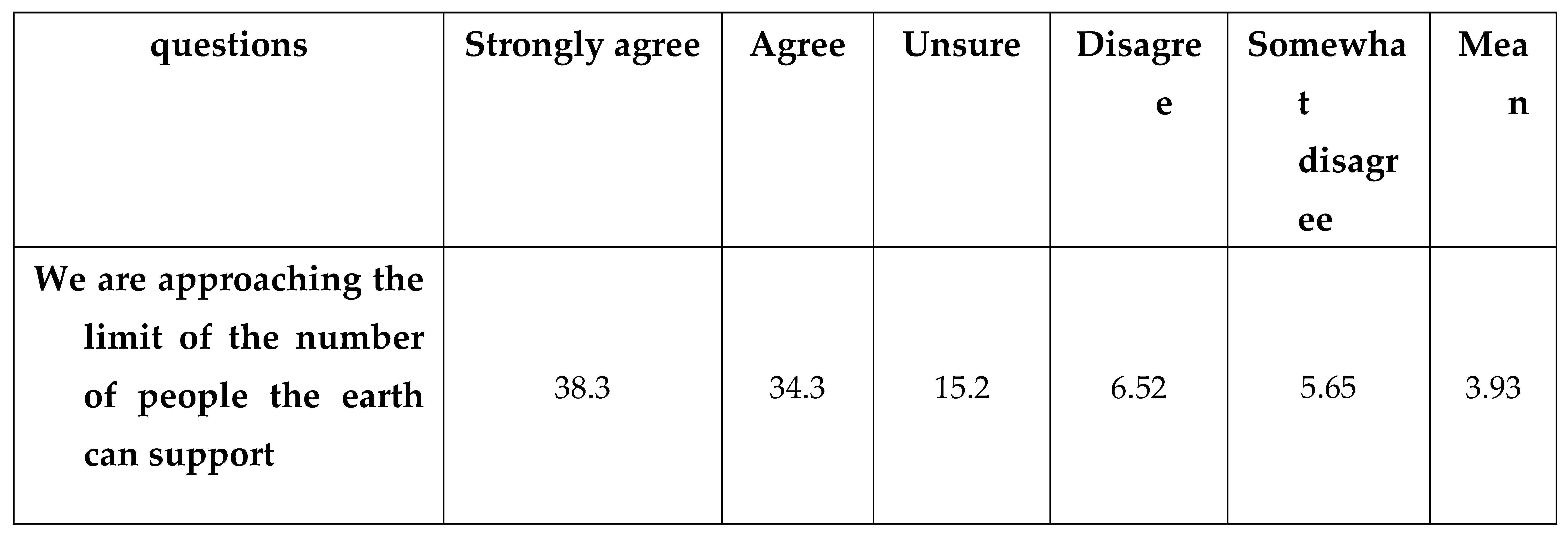
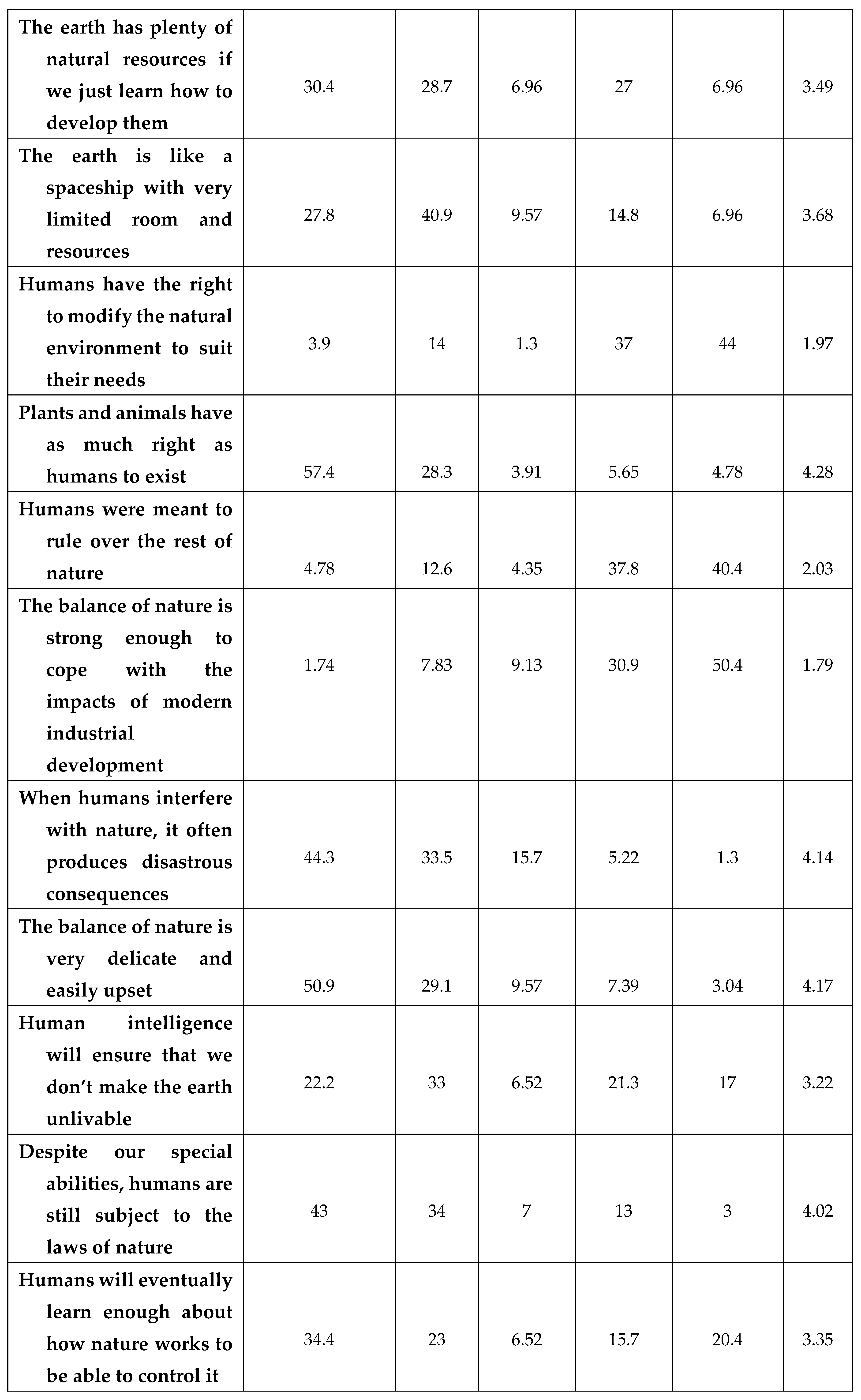

3.6. Logit model analysis
3.7. Calculating the WTP and the total annual recreational value of the Helen forest
4. Discussion
5. Conclusion
Author Contributions
Institutional Review Board Statement
Informed Consent Statement
Data Availability Statement
Acknowledgments
Conflicts of Interest
References
- Enriquez-de-Salamanca, A., Valuation of ecosystem services: A source of financing Mediterranean loss-making forests. Small-scale Forestry 2023, 22 (1), 167-192. [CrossRef]
- De Groot, R.; Brander, L.; Van Der Ploeg, S.; Costanza, R.; Bernard, F.; Braat, L.; Christie, M.; Crossman, N.; Ghermandi, A.; Hein, L. Global estimates of the value of ecosystems and their services in monetary units. Ecosystem services 2012, 1(1), 50–61. [Google Scholar] [CrossRef]
- Perez-Verdin, G.; Sanjurjo-Rivera, E.; Galicia, L.; Hernandez-Diaz, J. C.; Hernandez-Trejo, V.; Marquez-Linares, M. A. Economic valuation of ecosystem services in Mexico: Current status and trends. Ecosystem Services 2016, 21, 6–19. [Google Scholar] [CrossRef]
- Campbell, E. T. Revealed social preference for ecosystem services using the eco-price. Ecosystem Services 2018, 30, 267–275. [Google Scholar] [CrossRef]
- Kornatowska, B.; Sienkiewicz, J. Forest ecosystem services–assessment methods. Folia Forestalia Polonica. Series A. Forestry 2018, 60(4), 248–260. [Google Scholar] [CrossRef]
- Bertram, C.; Larondelle, N. Going to the woods is going home: Recreational benefits of a larger urban forest site—A travel cost analysis for Berlin, Germany. Ecological economics 2017, 132, 255–263. [Google Scholar] [CrossRef]
- Bamwesigye, D.; Hlaváčková, P. In The non-wood forest value of Bwindi impenetrable forest, Uganda, Conference proceedings from International Scientific Conference “Public recreation and landscape protection–with nature hand in hand”, Brno, 2nd-4th May, 2017.
- Bamwesigye, D.; Hlavackova, P. Forest wood production in Tropical Africa. J. Landsc. Manag 2018, 9, 39–45. [Google Scholar]
- Upton, V.; Dhubháin, Á. N.; Bullock, C., The valuation of non-market forest benefits in Ireland: A review. Irish Forestry 2019, 109–125-109–125.. Upton, V.; Dhubháin, Á. N.; Bullock, C., The valuation of non-market forest benefits in Ireland: A review. Irish Forestry 2019, 109–125-109–125.
- Hou, Y.; Li, B.; Müller, F.; Fu, Q.; Chen, W. A conservation decision-making framework based on ecosystem service hotspot and interaction analyses on multiple scales. Science of the Total Environment 2018, 643, 277–291. [Google Scholar] [CrossRef] [PubMed]
- Tambor, M.; Pavlova, M.; Rechel, B.; Golinowska, S.; Sowada, C.; Groot, W. Willingness to pay for publicly financed health care services in Central and Eastern Europe: Evidence from six countries based on a contingent valuation method. Social Science & Medicine 2014, 116, 193–201. [Google Scholar] [CrossRef]
- Zhang, L.; Yu, X.; Jiang, M.; Xue, Z.; Lu, X.; Zou, Y. A consistent ecosystem services valuation method based on Total Economic Value and Equivalent Value Factors: A case study in the Sanjiang Plain, Northeast China. Ecological Complexity 2017, 29, 40–48. [Google Scholar] [CrossRef]
- Riccioli, F.; Fratini, R.; Fagarazzi, C.; Cozzi, M.; Viccaro, M.; Romano, S.; Rocchini, D.; Espinosa Diaz, S.; Tattoni, C. Mapping the recreational value of coppices’ management systems in Tuscany. Sustainability 2020, 12(19), 8039. [Google Scholar] [CrossRef]
- Davis, R. K. Recreation planning as an economic problem. Nat. Resources J. 1963, 3, 239. [Google Scholar]
- Kharchenko, N.; Morkovina, S.; Kapitonov, D.; Lisova, O. Forest ecosystem services in the system of sustainable forest use of sparsely forested regions of Russia. Journal of Engineering and Applied Sciences 2018, 13(10), 3567–3572. [Google Scholar]
- Tauristina, A.; Diswandi, D.; Mahmudi, H., Economic Valuation of Forest Resources from Drinking Water Customers’ Point of View: a Contingent Valuation Method Application.
- Needham, K.; Hanley, N. Valuing a managed realignment scheme: What are the drivers of public willingness to pay? Ocean & Coastal Management 2019, 170, 29–39. [Google Scholar] [CrossRef]
- Fulton, D. C.; Manfredo, M. J.; Lipscomb, J. Wildlife value orientations: A conceptual and measurement approach. Human dimensions of wildlife 1996, 1(2), 24–47. [Google Scholar] [CrossRef]
- Brown, G.; Reed, P. Validation of a forest values typology for use in national forest planning. Forest science 2000, 46(2), 240–247. [Google Scholar]
- McConnell, K. E., Existence and bequest value. In Managing air quality and scenic resources at national parks and wilderness areas, Routledge: 2019; pp 254-264.
- Bergstrom, J.; Reiling, S., Does existence value exist? 1998.
- Loomis, J., The role of economics in managing natural resources for society. Society and Natural Resources: A Summary of Knowledge. Modern Litho, Jefferson, MO 2004, 295-304.
- Harris, C. C.; Driver, B. L.; McLaughlin, W. J. Improving the contingent valuation method: a psychological perspective. Journal of environmental economics and management 1989, 17(3), 213–229. [Google Scholar] [CrossRef]
- Ajzen, I.; Driver, B. Contingent value measurement: On the nature and meaning of willingness to pay. Journal of consumer psychology 1992, 1(4), 297–316. [Google Scholar] [CrossRef]
- Arrow, K.; Solow, R.; Portney, P. R.; Leamer, E. E.; Radner, R.; Schuman, H. Report of the NOAA panel on contingent valuation. Federal register 1993, 58(10), 4601–4614. [Google Scholar]
- Johnston, R. J.; Boyle, K. J.; Adamowicz, W.; Bennett, J.; Brouwer, R.; Cameron, T. A.; Hanemann, W. M.; Hanley, N.; Ryan, M.; Scarpa, R. Contemporary guidance for stated preference studies. Journal of the Association of Environmental and Resource Economists 2017, 4(2), 319–405. [Google Scholar] [CrossRef]
- Bartczak, A. The role of social and environmental attitudes in non-market valuation: An application to the Białowieża Forest. Forest Policy and Economics 2015, 50, 357–365. [Google Scholar] [CrossRef]
- McIntyre, A.; Milfont, T. L. Who cares? Measuring environmental attitudes. Research methods for environmental psychology 2016, 93–114. [Google Scholar]
- Sulphey, M.; AlKahtani, N. S.; Senan, N. A. M.; Adow, A. H. E. New Environmental Paradigm, Environmental Attitude, and Proenvironmental Behaviour as Antecedents of Environmental Sustainability. International Journal of Energy Economics and Policy 2023, 13(3), 418. [Google Scholar] [CrossRef]
- Qian, C.; Yu, K.; Gao, J. Understanding environmental attitude and willingness to pay with an objective measure of attitude strength. Environment and Behavior 2021, 53(2), 119–150. [Google Scholar] [CrossRef]
- Bateman, I.; Großbritannien, D. o. T., Economic valuation with stated preference techniques: a manual. Edward Elgar Cheltenham: 2002; Vol. 50.
- Stern, P. C. New environmental theories: toward a coherent theory of environmentally significant behavior. Journal of social issues 2000, 56(3), 407–424. [Google Scholar] [CrossRef]
- Spash, C. L.; Urama, K.; Burton, R.; Kenyon, W.; Shannon, P.; Hill, G. Motives behind willingness to pay for improving biodiversity in a water ecosystem: Economics, ethics and social psychology. Ecological Economics 2009, 68(4), 955–964. [Google Scholar] [CrossRef]
- Dunlap, R. E., The new environmental paradigm scale: from marginality to worldwide use. Journal of environmental education 2008, 40 (1). [CrossRef]
- Dunlap, R. E.; Van Liere, K. D. The “new environmental paradigm”. The journal of environmental education 1978, 9(4), 10–19. [Google Scholar] [CrossRef]
- Dunlap, R. E.; Van Liere, K. D.; Mertig, A. G.; Jones, R. E. New trends in measuring environmental attitudes: measuring endorsement of the new ecological paradigm: a revised NEP scale. Journal of social issues 2000, 56(3), 425–442. [Google Scholar] [CrossRef]
- Putrawan, I. M. Measuring new environmental paradigm based on students knowledge about ecosystem and locus of control. EURASIA Journal of Mathematics, Science and Technology Education 2015, 11, 325–333. [Google Scholar] [CrossRef]
- Kemper, J. A.; Ballantine, P. W.; Hall, C. M. Sustainability worldviews of marketing academics: A segmentation analysis and implications for professional development. Journal of Cleaner Production 2020, 271, 122568. [Google Scholar] [CrossRef]
- Kotchen, M. J.; Reiling, S. D. Environmental attitudes, motivations, and contingent valuation of nonuse values: a case study involving endangered species. Ecological Economics 2000, 32(1), 93–107. [Google Scholar] [CrossRef]
- Cooper, P.; Poe, G. L.; Bateman, I. J. The structure of motivation for contingent values: a case study of lake water quality improvement. Ecological Economics 2004, 50, 69–82. [Google Scholar] [CrossRef]
- Spash, C. L. Non-economic motivation for contingent values: Rights and attitudinal beliefs in the willingness to pay for environmental improvements. Land Economics 2006, 82(4), 602–622. [Google Scholar] [CrossRef]
- Meyerhoff, J. Stated willingness to pay as hypothetical behaviour: can attitudes tell us more? Journal of Environmental Planning and Management 2006, 49(2), 209–226. [Google Scholar] [CrossRef]
- Ojea, E.; Loureiro, M. L. Altruistic, egoistic and biospheric values in willingness to pay (WTP) for wildlife. Ecological Economics 2007, 63(4), 807–814. [Google Scholar] [CrossRef]
- Aldrich, G. A.; Grimsrud, K. M.; Thacher, J. A.; Kotchen, M. J. Relating environmental attitudes and contingent values: how robust are methods for identifying preference heterogeneity? Environmental and Resource Economics 2007, 37, 757–775. [Google Scholar] [CrossRef]
- Hoyos, D. The state of the art of environmental valuation with discrete choice experiments. Ecological economics 2010, 69(8), 1595–1603. [Google Scholar] [CrossRef]
- Choi, A. S.; Fielding, K. S. Environmental attitudes as WTP predictors: A case study involving endangered species. Ecological Economics 2013, 89, 24–32. [Google Scholar] [CrossRef]
- Meldrum, J. R. Comparing different attitude statements in latent class models of stated preferences for managing an invasive forest pathogen. Ecological Economics 2015, 120, 13–22. [Google Scholar] [CrossRef]
- Halkos, G.; Matsiori, S. Environmental attitude, motivations and values for marine biodiversity protection. Journal of Behavioral and experimental Economics 2017, 69, 61–70. [Google Scholar] [CrossRef]
- Taye, F. A.; Vedel, S. E.; Jacobsen, J. B. Accounting for environmental attitude to explain variations in willingness to pay for forest ecosystem services using the new environmental paradigm. Journal of Environmental Economics and Policy 2018, 7(4), 420–440. [Google Scholar] [CrossRef]
- Kim, D.; Avenzora, R.; Lee, J.-h. Exploring the outdoor recreational behavior and new environmental paradigm among urban forest visitors in Korea, Taiwan and Indonesia. Forests 2021, 12(12), 1651. [Google Scholar] [CrossRef]
- Yu, Y.; Wang, E.; Wang, Z. Valuing Nonuse Value of a National Forest Park with Consideration of the Local Residents’ Environmental Attitudes. Forests 2023, 14(7), 1487. [Google Scholar] [CrossRef]
- Jafari, A.; Arman, Z. Monitoring of vegetation cover change in Helen forested protected area and its causes based on bi-temporal analysis of NDVI. Journal of Natural Environment 2015, 67. [Google Scholar]
- Raeisian, R., Final report national plan of data collection and analysis to provide identification of watersheds in Chaharmahal and Bakhtiari. Livestock and Natural Resources Research Center of Chaharmahal and Bakhtiari Province, Shahrekord (in Persian) 2000.
- Naderi, E.; Jafari, A.; Mafi-Gholami, D. Zoning Helen Forest protected area in Chaharmahal and Bakhtiari province for conservation-ecotourism goals. Journal of Tourism and Development 2023, 12(1), 43–58. [Google Scholar]
- Bance, P.; Chassy, A. Citizen Advisory Committees in the Contingent Valuation Method Process. Politics & Policy 2020, 48, 766–797. [Google Scholar] [CrossRef]
- Shee, A.; Azzarri, C.; Haile, B. Farmers’ willingness to pay for improved agricultural technologies: Evidence from a field experiment in Tanzania. Sustainability 2019, 12(1), 216. [Google Scholar] [CrossRef]
- Mitchell, R.; Carson, R.; Ruud, P., Cincinnati visibility valuation study: Pilot study findings. Report to the Electric Power Research Institute, USA 1989.
- Marta-Pedroso, C.; Freitas, H.; Domingos, T. Testing for the survey mode effect on contingent valuation data quality: A case study of web based versus in-person interviews. Ecological economics 2007, 62, 388–398. [Google Scholar] [CrossRef]
- Zhou, Y.; Chen, H.; Xu, S.; Wu, L. How cognitive bias and information disclosure affect the willingness of urban residents to pay for green power? Journal of Cleaner Production 2018, 189, 552–562. [Google Scholar] [CrossRef]
- Xie, B.-C.; Zhao, W.; Yin, Z.-L.; Xie, P. How much will the residents pay for clean energy? Empirical study using the double bound dichotomous choice method for Tianjin, China. Journal of Cleaner Production 2019, 241, 118208. [Google Scholar] [CrossRef]
- Vidal, D. G.; Dias, R. C.; Seixas, P. C.; Dinis, M. A. P.; Fernandes, C. O.; Barros, N.; Maia, R. L., Measuring Environmental Concern of Urban Green Spaces’ Users (UGSU) Through the Application of the New Ecological Paradigm Scale (NEPS): Evidence from a Southern European City. In Sustainable Policies and Practices in Energy, Environment and Health Research: Addressing Cross-cutting Issues, Springer: 2021; pp 21-37.
- Naseri, H.; Waygood, E. O. D.; Wang, B.; Patterson, Z.; Daziano, R. A. A novel feature selection technique to better predict climate change stage of change. Sustainability 2021, 14(1), 40. [Google Scholar] [CrossRef]
- Liu, W.-Y.; Lin, Y.-Z.; Hsieh, C.-M. Assessing the ecological value of an urban forest park: A case study of sinhua forest park in taiwan. Forests 2021, 12(6), 806. [Google Scholar] [CrossRef]
- Siew, M. K.; Yacob, M. R.; Radam, A.; Adamu, A.; Alias, E. F. Estimating willingness to pay for wetland conservation: a contingent valuation study of Paya Indah Wetland, Selangor Malaysia. Procedia Environmental Sciences 2015, 30, 268–272. [Google Scholar] [CrossRef]
- Asafu-Adjaye, J.; Tapsuwan, S. A contingent valuation study of scuba diving benefits: Case study in Mu Ko Similan Marine National Park, Thailand. Tourism Management 2008, 29(6), 1122–1130. [Google Scholar] [CrossRef]
- Hanemann, W. M. Valuing the environment through contingent valuation. Journal of economic perspectives 1994, 8(4), 19–43. [Google Scholar] [CrossRef]
- Lee, C.-K.; Han, S.-Y. Estimating the use and preservation values of national parks’ tourism resources using a contingent valuation method. Tourism management 2002, 23(5), 531–540. [Google Scholar] [CrossRef]
- Judge, G. G.; Griffiths, W. E.; Hill, R. C.; Lütkepohl, H.; Lee, T.-C., The theory and practice of econometrics. John wiley & sons: 1991; Vol. 49.
- Bateman, I., Placing money values on the unpriced benefits of forestry. Quarterly Journal of Forestry (United Kingdom) 1991.
- White, P.; Lovett, J. Public preferences and willingness-to-pay for nature conservation in the North York Moors National Park, UK. Journal of Environmental Management 1999, 55(1), 1–13. [Google Scholar] [CrossRef]
- Kennedy, C., Conservation thresholds for land use planners. Environmental Law Institute: 2003.
- Khodaverdi Zadeh, M.; Najafi Allamdarloo, H.; Raheli, H. The estimated value of the contingent valuation method recreational village Orumieh dam. Agricultural Economics Research 2010, 2(4), 49–62. [Google Scholar]
- Judge, G. G., Introduction to the Theory and Practice of Econometrics. 1988.
- Fatahi, A., Foundations of economic valuation of natural resources. Ardakan University Press, First edition, Iran: 2013.
- Balmford, A.; Green, J. M.; Anderson, M.; Beresford, J.; Huang, C.; Naidoo, R.; Walpole, M.; Manica, A. Walk on the wild side: estimating the global magnitude of visits to protected areas. PLoS biology 2015, 13(2), e1002074. [Google Scholar] [CrossRef] [PubMed]
- Buckley, R.; Brough, P.; Hague, L.; Chauvenet, A.; Fleming, C.; Roche, E.; Sofija, E.; Harris, N. Economic value of protected areas via visitor mental health. Nature communications 2019, 10(1), 5005. [Google Scholar] [CrossRef]
- Myung, E. An exploratory study of attendee willingness to pay for environmentally friendly meetings. International Journal of Hospitality & Tourism Administration 2017, 18, 272–287. [Google Scholar] [CrossRef]
- Cook, D.; Davíðsdóttir, B.; Kristófersson, D. M. An ecosystem services perspective for classifying and valuing the environmental impacts of geothermal power projects. Energy for Sustainable Development 2017, 40, 126–138. [Google Scholar] [CrossRef]
- Doli, A.; Bamwesigye, D.; Hlaváčková, P.; Fialová, J.; Kupec, P.; Asamoah, O. Forest park visitors opinions and willingness to pay for sustainable development of the Germia forest and recreational park. Sustainability 2021, 13(6), 3160. [Google Scholar] [CrossRef]
- Shirmardi, H. A.; Mozaffarian, V.; Gholami, P.; Heidari, G.; Safaei, M. Introduction of the flora, life form and chorology of Helen protected area in Chaharmahal and Bakhtiari province. Iranian Journal of Plant Biology 2014, 6(20), 75–96. [Google Scholar]
- do Val Simardi Beraldo Souza, T.; Thapa, B.; Rodrigues, C. G. d. O.; Imori, D. Economic impacts of tourism in protected areas of Brazil. Journal of Sustainable Tourism 2019, 27(6), 735–749. [Google Scholar] [CrossRef]
- Luzar, E. J.; Cosse, K. J. Willingness to pay or intention to pay: The attitude-behavior relationship in contingent valuation. The Journal of Socio-Economics 1998, 27, 427–444. [Google Scholar] [CrossRef]
- Khanal, Y.; Devkota, B. P. Farmers' responsibilization in payment for environmental services: Lessons from community forestry in Nepal. Forest Policy and Economics 2020, 118, 102237. [Google Scholar] [CrossRef]
- Naime, J.; Mora, F.; Sánchez-Martínez, M.; Arreola, F.; Balvanera, P. Economic valuation of ecosystem services from secondary tropical forests: trade-offs and implications for policy making. Forest Ecology and Management 2020, 473, 118294. [Google Scholar] [CrossRef]
- Tilahun, M.; Vranken, L.; Muys, B.; Deckers, J.; Gebregziabher, K.; Gebrehiwot, K.; Bauer, H.; Mathijs, E. Rural households' demand for frankincense forest conservation in Tigray, Ethiopia: a contingent valuation analysis. Land Degradation & Development 2015, 26, 642–653. [Google Scholar]
- Iranah, P.; Lal, P.; Wolde, B. T.; Burli, P. Valuing visitor access to forested areas and exploring willingness to pay for forest conservation and restoration finance: The case of small island developing state of Mauritius. Journal of environmental management 2018, 223, 868–877. [Google Scholar] [CrossRef] [PubMed]
- Harmon, D. In Intangible values of protected areas: what are they? Why do they matter?, The George Wright Forum, JSTOR: 2004; pp 9-22.
- Abildtrup, J.; Olsen, S. B.; Stenger, A. Combining RP and SP data while accounting for large choice sets and travel mode–an application to forest recreation. Journal of Environmental Economics and Policy 2015, 4(2), 177–201. [Google Scholar] [CrossRef]
- Giergiczny, M.; Czajkowski, M.; Żylicz, T.; Angelstam, P. Choice experiment assessment of public preferences for forest structural attributes. Ecological Economics 2015, 119, 8–23. [Google Scholar] [CrossRef]
- Saha, D.; Agarwalla, S., Willingness to Pay for Forest Conservation: An Empirical Investigation in Simlipal Forest. 2023.
- Subanti, S.; Zukhronah, E.; Handajani, S.; Irawan, B. B.; Hakim, A. In Measuring economic value for tourism destination using contingent valuation method: The Sangiran Sites, Central Java Province, Indonesia, Journal of Physics: Conference Series, IOP Publishing: 2018; p 012066.
- Beal, D. J., A travel cost analysis of the value of Carnarvon Gorge National Park for recreational use. Review of Marketing and Agricultural economics 1995, 63 (430-2016-31498), 292-303.
- Yeganeh, H.; Pourbagher, S.; Akbari, M., Investigating the factors affecting the willingness to pay ecotourism in the desert area rural of Qaleh-Bala Biarjomand-Semnan province. 2022.
- Chang-San, B. A study of the economic valuation of the Saryeoni forest path utilizing the contingent valuation method. Global Business & Finance Review (GBFR), 2019; 24, 51–64. [Google Scholar] [CrossRef]
- Amirnejad, H.; Ataie Solout, K.; Zarandian, A. Comparison of Contingent Valuation and Travel Cost Methods to Estimate Outdoor Recreation Value of Recreation, Tourism and Aesthetic Function of Bamou National Park. Journal of Environmental Science and Technology 2020, 22(9), 73–85. [Google Scholar]
- Tan, Ç. An assessment of pre-service teachers’ attitudes toward books on environment and, relationship between attitudes and environmental behaviours; environmental thinking. Procedia-Social and Behavioral Sciences 2014, 116, 4357–4361. [Google Scholar] [CrossRef]
- Deng, J.; Andrada II, R.; Pierskalla, C. Visitors’ and residents’ perceptions of urban forests for leisure in Washington DC. Urban forestry & urban greening 2017, 28, 1–11. [Google Scholar] [CrossRef]
- Song, X.; Lv, X.; Li, C. Willingness and motivation of residents to pay for conservation of urban green spaces in Jinan, China. Acta Ecologica Sinica 2015, 35(4), 89–94. [Google Scholar] [CrossRef]
- Hörnsten, L.; Fredman, P. On the distance to recreational forests in Sweden. Landscape and urban planning 2000, 51(1), 1–10. [Google Scholar] [CrossRef]
- Smink, C. K., Forests and Recreation–New Functions of Afforestation as Seen in Denmark. In New perspectives on people and forests, Springer: 2011; pp 87-95.
- Milon, J. W.; Scrogin, D. Latent preferences and valuation of wetland ecosystem restoration. Ecological Economics 2006, 56(2), 162–175. [Google Scholar] [CrossRef]
- Hedlund, T. The impact of values, environmental concern, and willingness to accept economic sacrifices to protect the environment on tourists’ intentions to buy ecologically sustainable tourism alternatives. Tourism and Hospitality Research 2011, 11(4), 278–288. [Google Scholar] [CrossRef]
- Hwang, Y. T.; Moon, J.; Lee, W. S.; Kim, S. A.; Kim, J. Evaluation of firefly as a tourist attraction and resource using contingent valuation method based on a new environmental paradigm. Journal of Quality Assurance in Hospitality & Tourism 2020, 21, 320–336. [Google Scholar] [CrossRef]
- Dervişoglu, S., Learning pre-conditions for protecting the biodiversity. Unpublished doctoral dissertation) Hacettepe University, Ankara 2007.
- Stevenson, R. B. Schooling and environmental education: Contradictions in purpose and practice. Environmental education research 2007, 13(2), 139–153. [Google Scholar] [CrossRef]
- Torabi, Z.-A.; Rezvani, M. R.; Palouj, M. Comparing the effect of lecture and jigsaw teaching strategies on attitude and environmentally responsible behavior: A mixed-methods approach. Journal of Quality Assurance in Hospitality & Tourism 2022, 23, 1064–1087. [Google Scholar] [CrossRef]

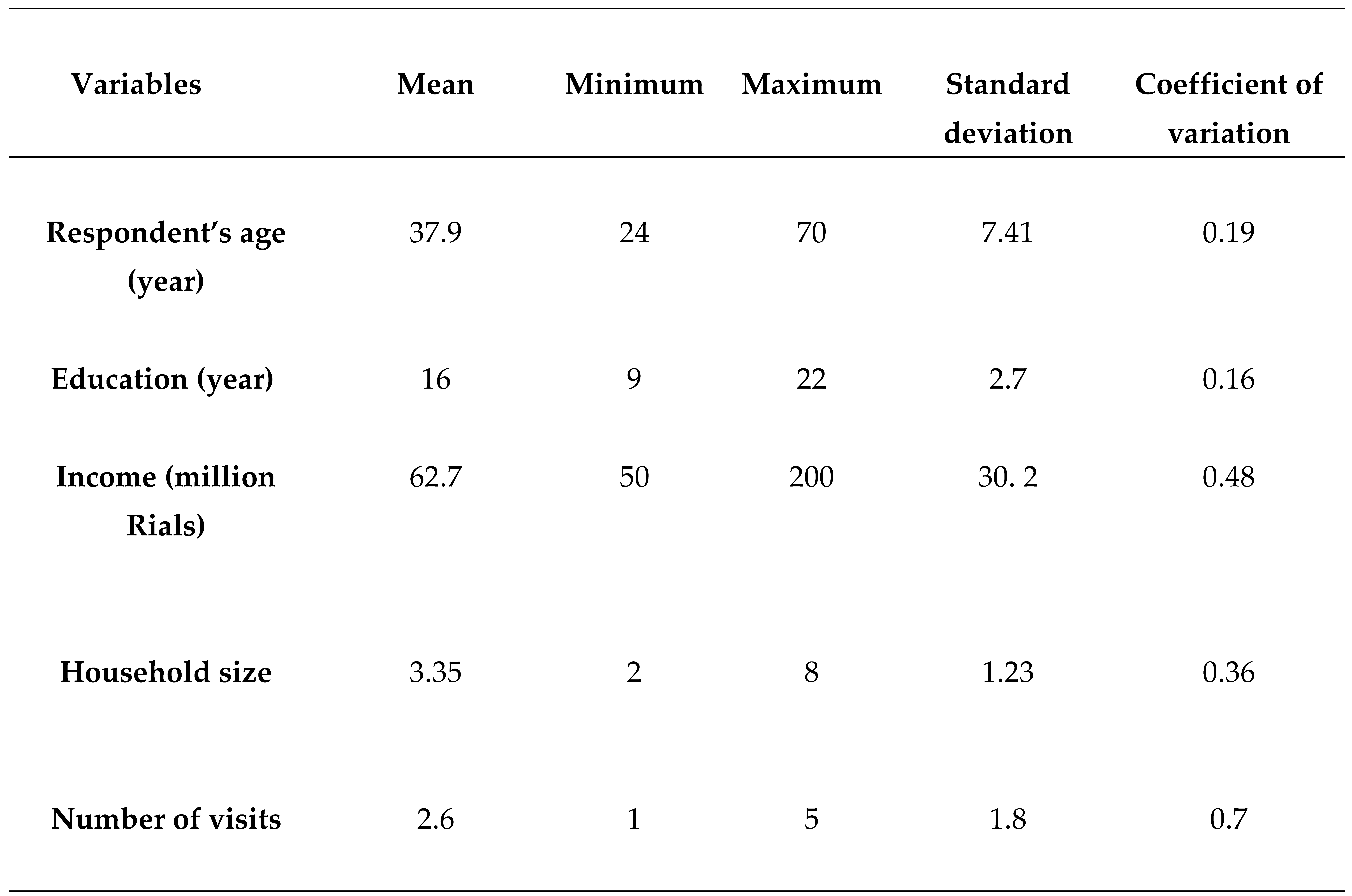

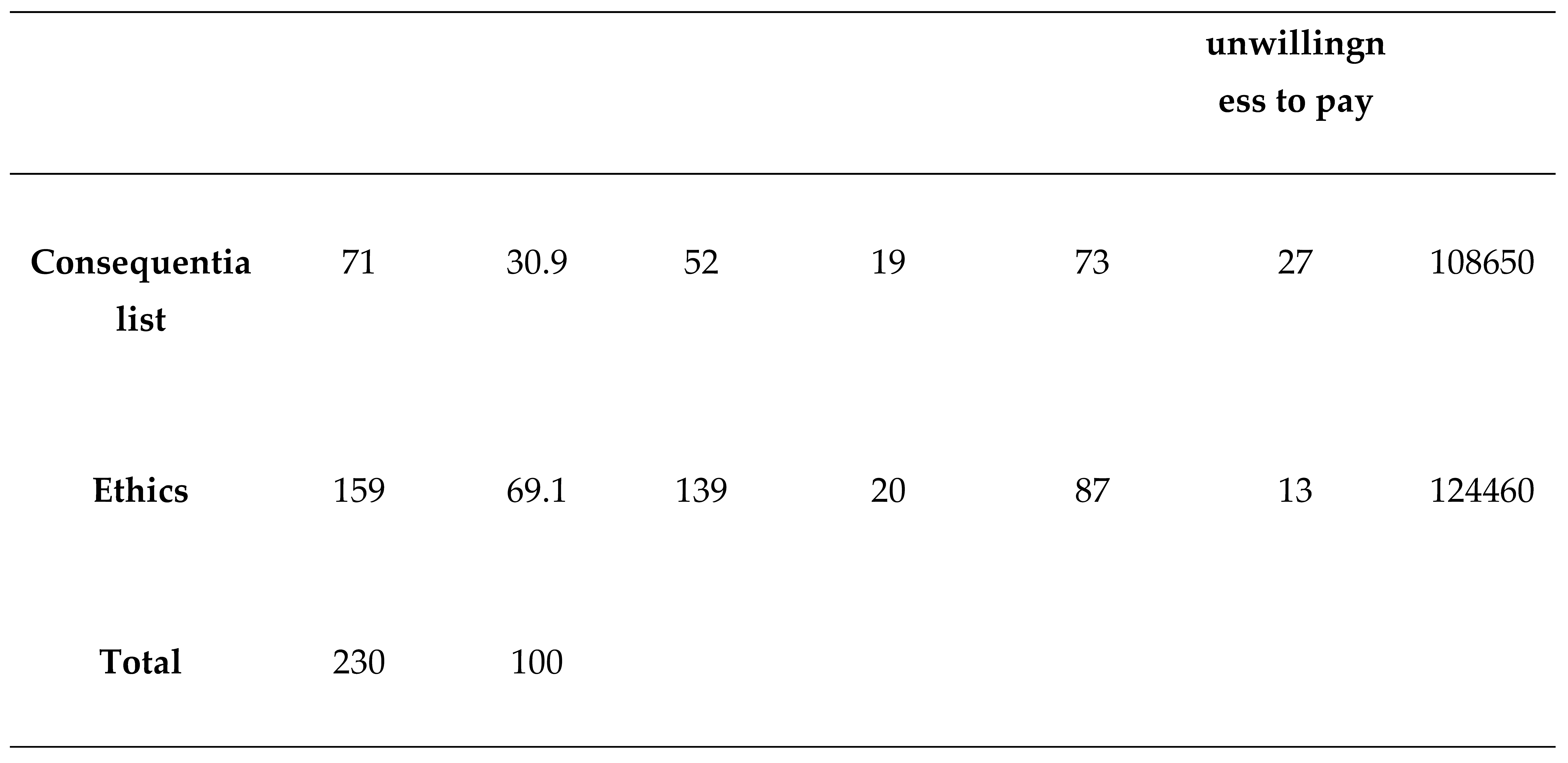
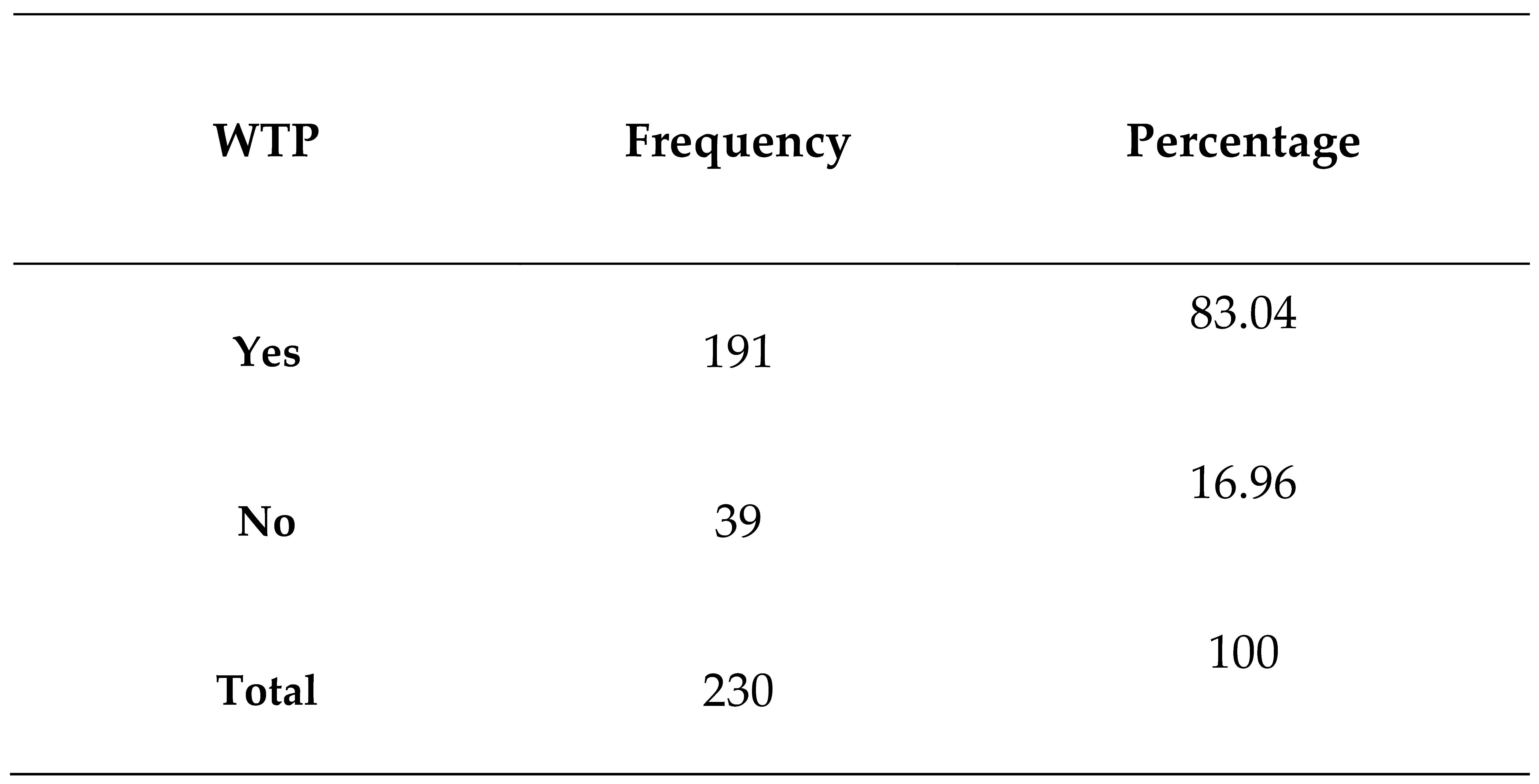
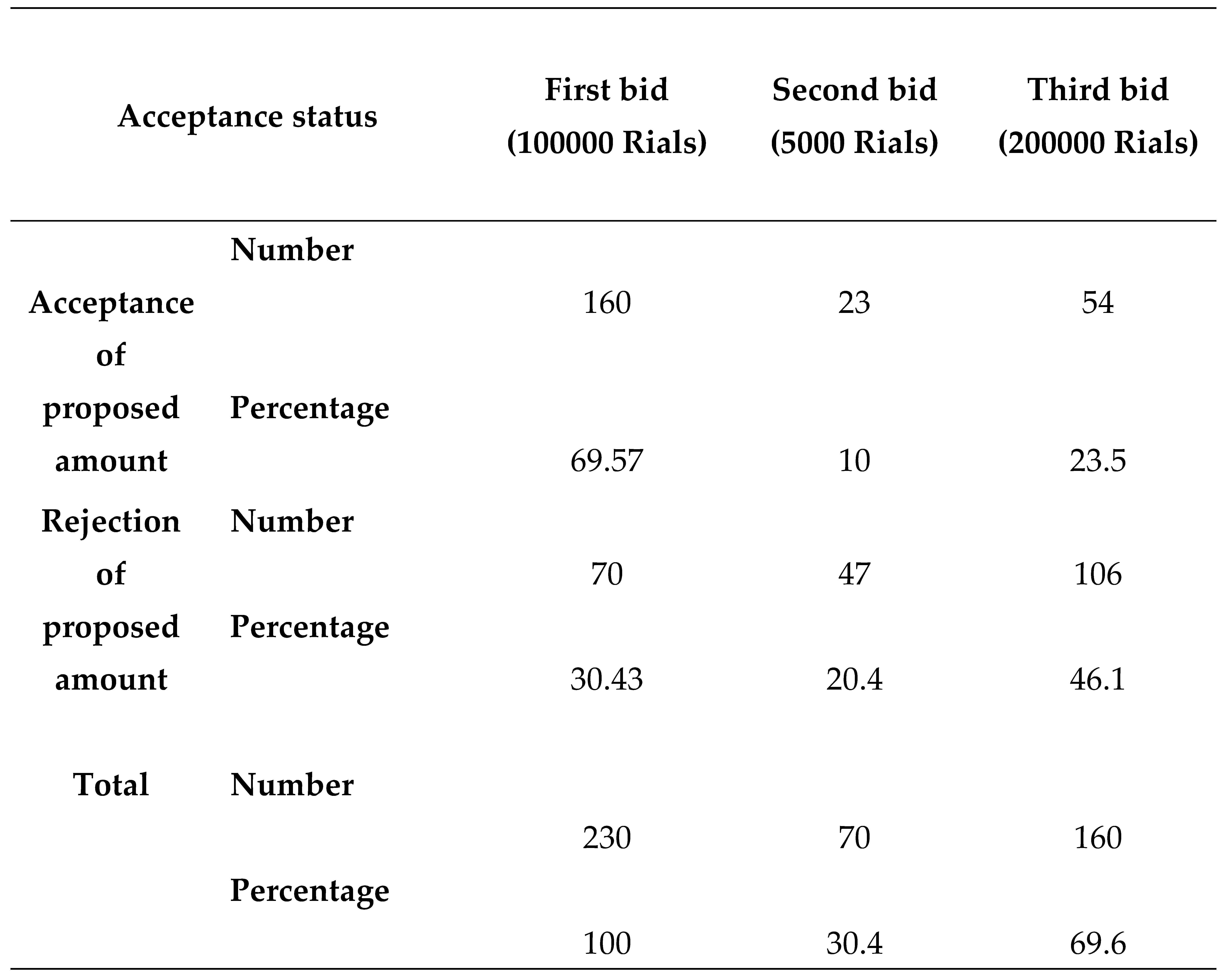
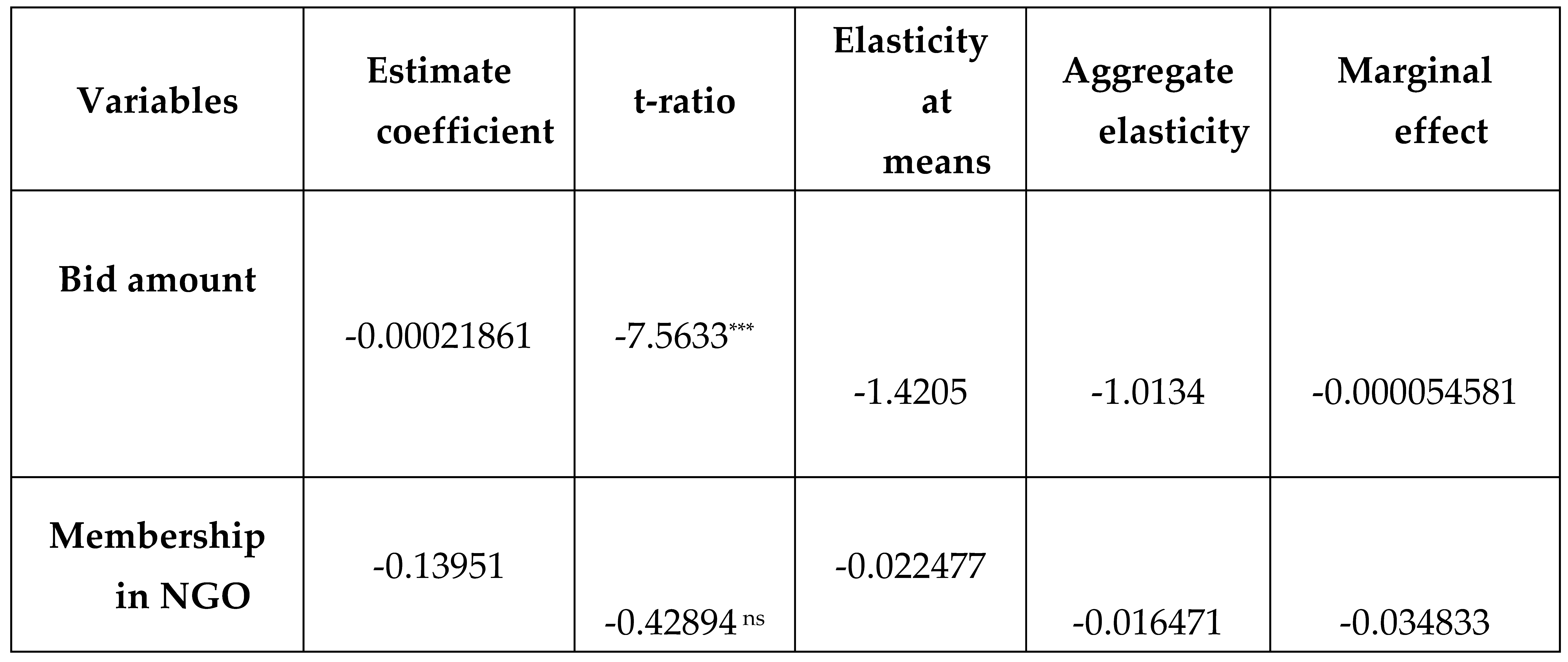
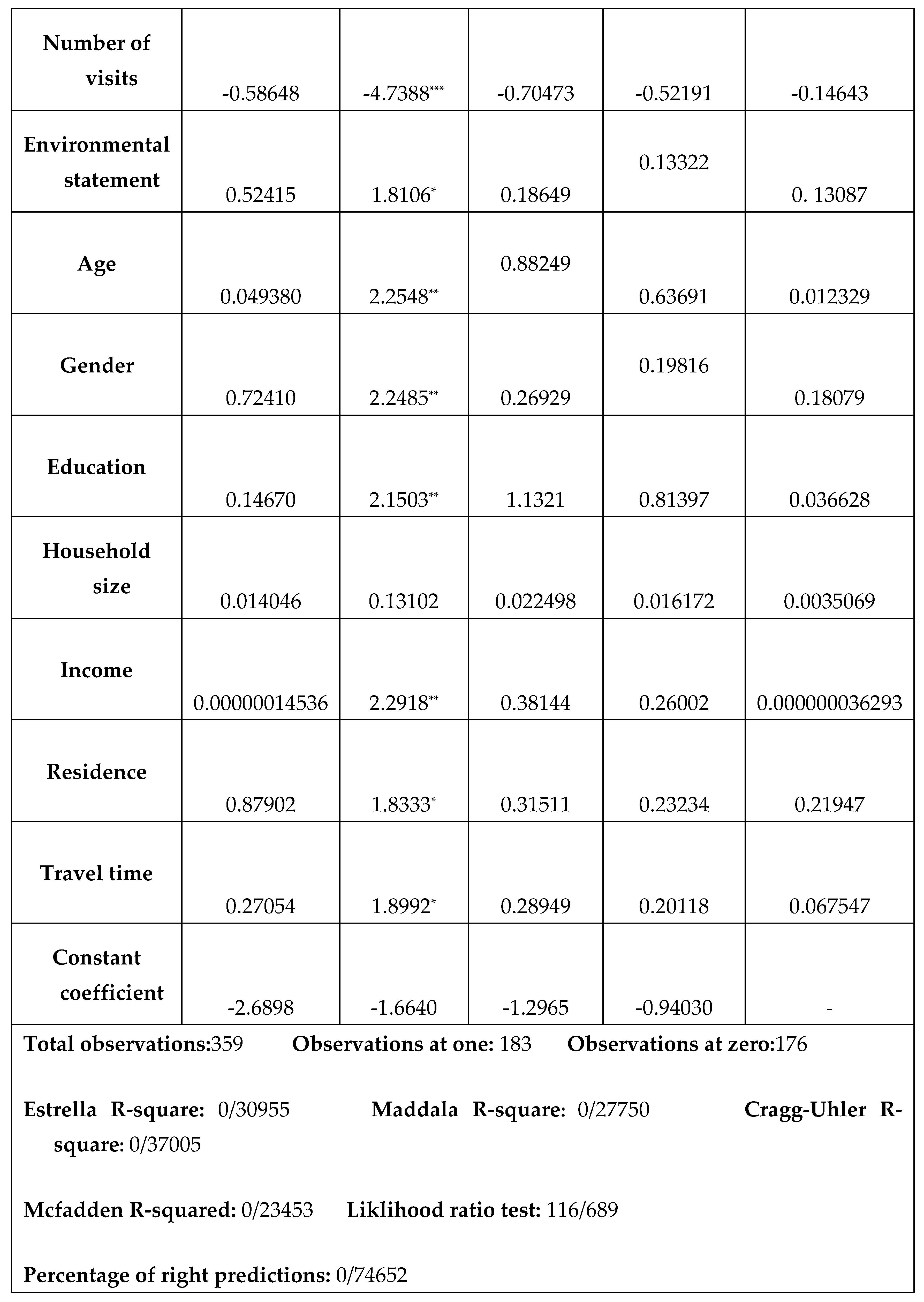

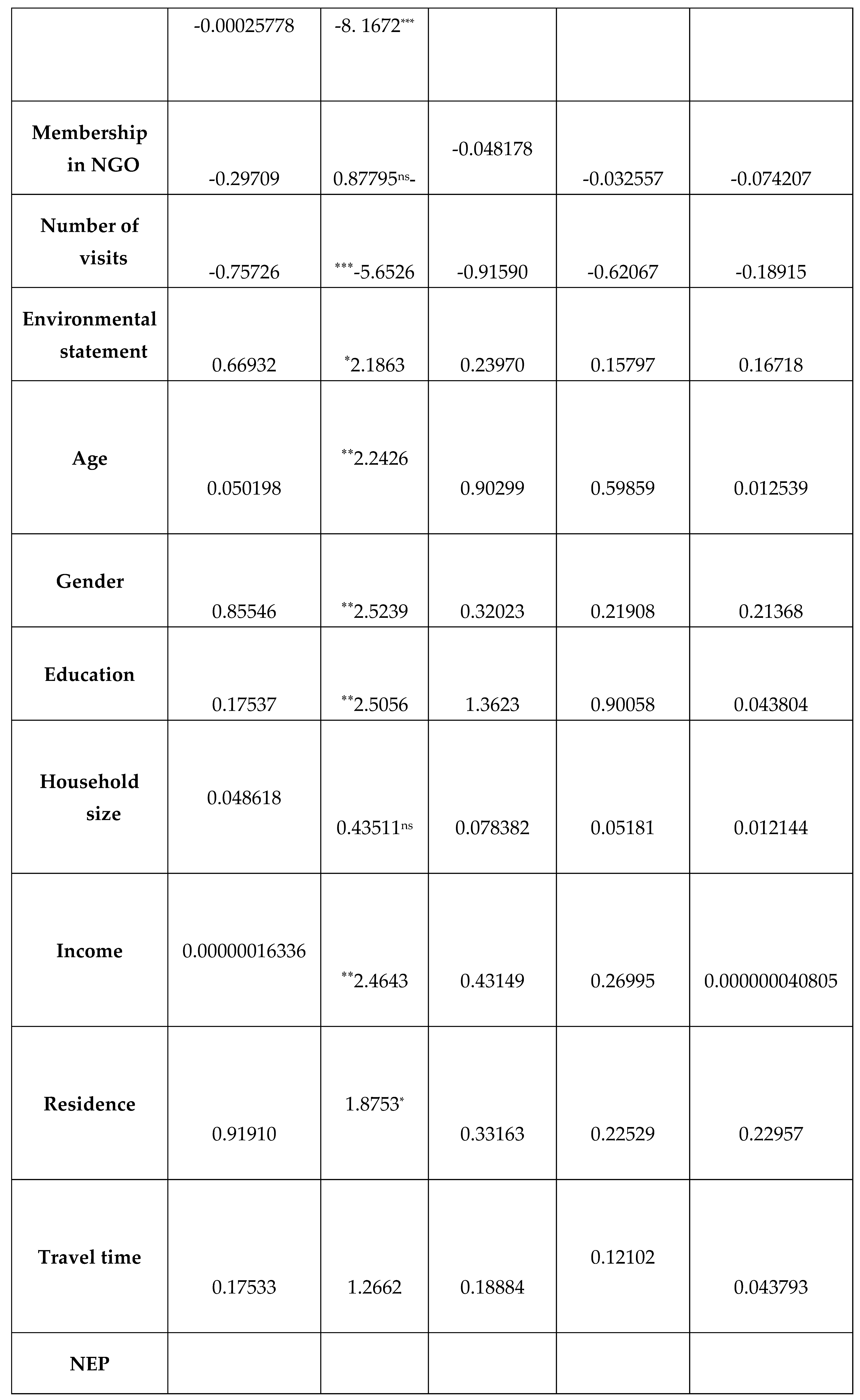
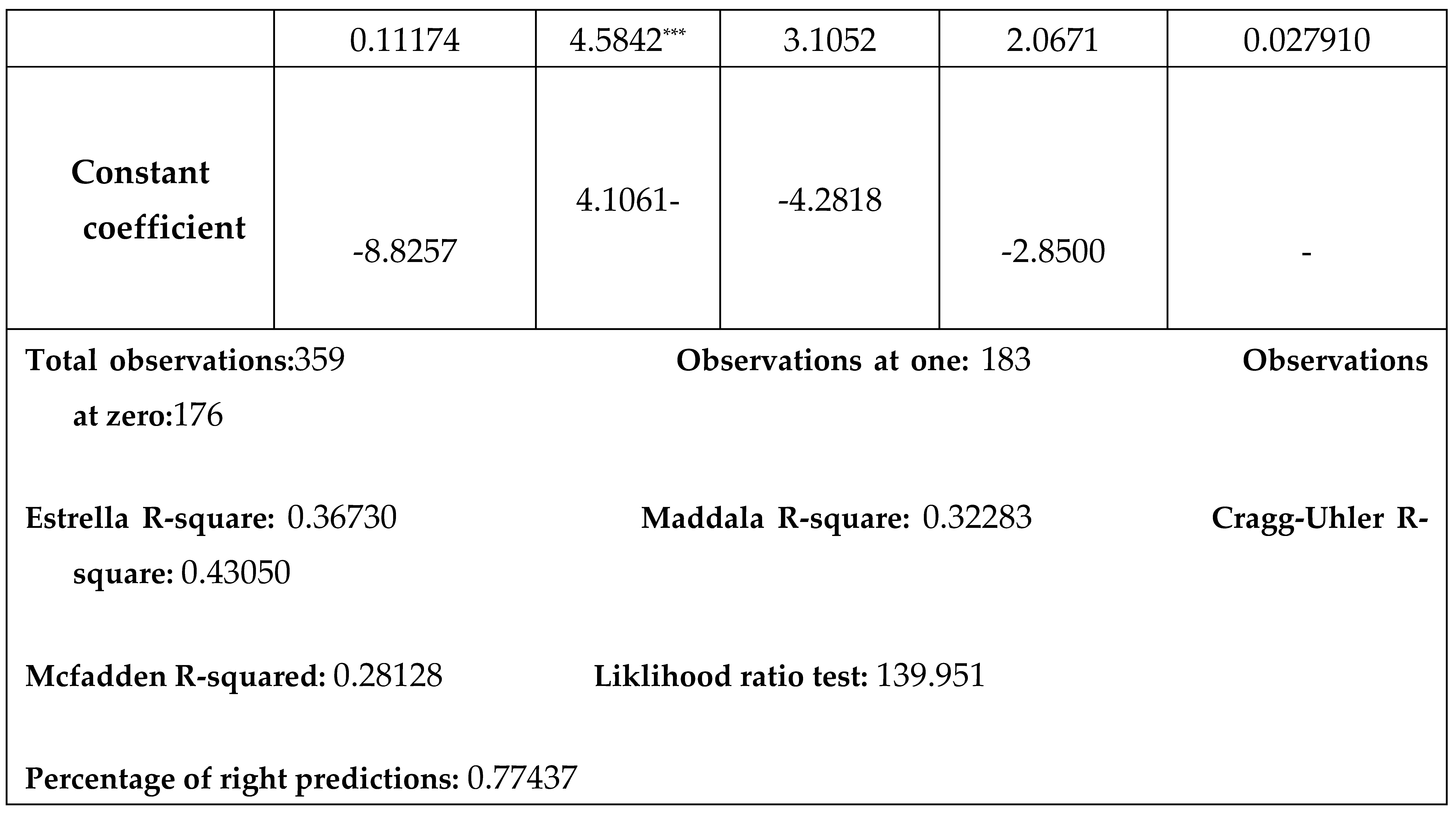
Disclaimer/Publisher’s Note: The statements, opinions and data contained in all publications are solely those of the individual author(s) and contributor(s) and not of MDPI and/or the editor(s). MDPI and/or the editor(s) disclaim responsibility for any injury to people or property resulting from any ideas, methods, instructions or products referred to in the content. |
© 2024 by the authors. Licensee MDPI, Basel, Switzerland. This article is an open access article distributed under the terms and conditions of the Creative Commons Attribution (CC BY) license (http://creativecommons.org/licenses/by/4.0/).





